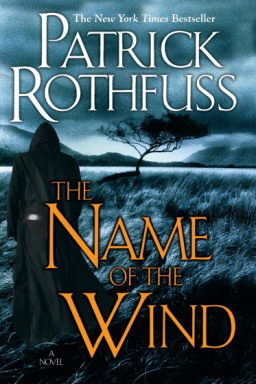Forbes on the Books that Inspired the New Dungeons & Dragons
 Gary Gygax, creator of Advanced Dungeons and Dragons, famously listed the fantasy writers and books that inspired him in Appendix N. We’ve had lengthy discussions on Appendix N, and its suitability as a jumping-off point for a fantasy collection, here on Black Gate.
Gary Gygax, creator of Advanced Dungeons and Dragons, famously listed the fantasy writers and books that inspired him in Appendix N. We’ve had lengthy discussions on Appendix N, and its suitability as a jumping-off point for a fantasy collection, here on Black Gate.
Now that there’s a new version of D&D on the market, it’s not too surprising that its creators have included their own version of Appendix N. And while I consider Gygax’s Appendix N to be a terrific resource for classic fantasy fans, I was pleased (and not at all surprised) to find that the new inspiration comes chiefly from a new generation of fantasy writers.
Forbes magazine writer David M. Ewalt, who’s written about Dungeons and Dragons before, interviewed Mike Mearls, head of R&D for Dungeons & Dragons and co-lead designer on the fifth edition rules, and designer Rodney Thompson. Here’s some excerpts:
Patrick Rothfuss ”showed that bards didn’t have to suck,” according to Mearls. Fifth edition designers knew that players would use the bard class to create characters inspired by Kvothe, the hero of Rothfuss’ novel The Name of the Wind. “We actually talked about using words of power as big element of the bard, but toned it down as too on the nose.”
Saladin Ahmed ”did a great job of capturing the concept of an adventuring party in Throne of the Crescent Moon,” says Mearls. “A lot of the stuff behind bonds, flaws, all the stuff that binds characters to the campaign, was inspired by reading Throne…”
Mearls, Thompson and the rest of D&D team are also inspired by the storytellers who wrote for previous versions of the Dungeons & Dragons game. Last week, Wizards of the Coast announced “Elemental Evil,” a new storyline in the Dungeons & Dragons product universe tied into several new products: The storyline is based, in part, on the 1985 game module The Temple of Elemental Evil, which was written by Gary Gygax and Frank Mentzer for the first edition Advanced Dungeons & Dragons rules.
David M. Ewalt is also the author of Of Dice and Men: The Story of Dungeons & Dragons and the People Who Play It. See his complete article here.
Is the new Appendix N in the 5th edition dungeon master’s guide?
No, it’s in the PHB. And it’s also Appendix [Some Letter Other Than N], which makes me vaguely sad. (I don’t have my copy to hand, so I can’t look it up.)
Having said that, I thought it was a fine list — a nice mix of old & new stuff, including Saladin Ahmed and Scott Lynch and N.K. Jemisin.
Thanks Joe! Sounds good. I think I’ll have to pick up a copy now!
It is Appendix E, and a list of the contents can be found in this Reddit discussion
I was very pleased with the list, there’s a lot of recent titles there that I’ve read and really enjoyed.
Thanks rjmiller! I looked at a the first comment in the thread:
“I think I should make it a life goal to make it onto one of these lists the next time a new edition comes out.”
Wouldn’t that be an interesting benchmark for future fantasy writers?!
Feels like the source material has become far more urbane since the original Appendix N. Also fun to see that the Elric book has become the Stormbringer series.
It is interesting to compare the two lists. Before D&D fantasy was a fringe genre with a small list of authors and stories. Now it is a mainstream genre with an entire section devoted to it in most book stores. I think D&D owes a lot to the computer games that put it over the top. That first list is what inspired the game and the second is the impact D&D with mainstreamed fantasy.
Oh and Patrick Rothfuss rocks. My only complaint is that he writes as slow as George R.R.R.R.R.R. Martin.
[…] Forbes on the Books that Inspired the New Dungeons & Dragons […]